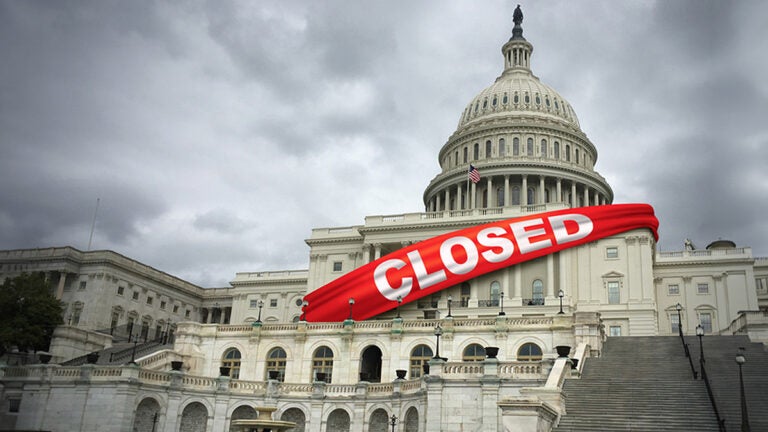
(Photo/Wildpixel via iStock)
How U.S. government shutdowns harm federal workers
New USC Price School research shows how shutdowns hamper policy implementation, damage morale and cause employee turnover.
Contact: Nina Raffio, raffio@usc.edu or (213) 442-8464; USC Media Relations, uscnews@usc.edu or (213) 740-2215
As the U.S. government barrels toward another shutdown, new research from the USC Price School of Public Policy suggests that shutdowns make it harder for federal workers to do their jobs – and could make it harder for the government to retain them.
Employees exposed to shutdowns were more likely to experience administrative dysfunction — such as unmanageable workloads, missed deadlines, poorer customer service and abandoned projects — according to a study from lead author William G. Resh, associate professor at the USC Price School. The study, published in Governance, also found that the 2013 shutdown acutely harmed employee morale, as furloughed workers were essentially told their work was non-essential.
Interestingly, Resh and his colleagues found no negative impact on morale from the 2019 shutdown. That could be because the 2013 shock prepared personnel for the subsequent shutdown — or those who were more dissatisfied might have already left by the time the survey took place.
There is some preliminary evidence to back up the latter theory. In a more recent working paper, which has yet to be published, Resh and his colleagues found that job separations increased substantially after government shutdowns. A federal agency with 10,000 full-time employees will lose roughly 500 additional workers during the fiscal quarter following a shutdown, according to their preliminary findings.
“We need to pay attention to the effect that shutdowns have on the morale and the talent that we can retain in the civil service, because without that, we will have a civil service that is as dysfunctional as the electoral institutions,” Resh said.
U.S. government shutdowns have become more frequent and longer in duration. The first four occurred under President Ronald Reagan, and none of them lasted more than a day. Since then, shutdowns have occurred under Presidents Bill Clinton, George H. W. Bush, Barack Obama and Donald Trump, with the stalemates lasting as long as 35 days.
Shutdowns — the result of Congress and the president failing to agree on a budget — have been largely driven by “anti-statist” populism, as politicians try to appeal to anti-government sentiments within the public, Resh said.
To examine the effects of government shutdowns on policy implementation and personnel, Resh and his colleagues used data from the Federal Employee Viewpoint Survey, which hundreds of thousands of federal workers fill out. The surveys included questions about the effects of government shutdowns on their work.
Since not all agencies are affected by shutdowns equally — some departments furlough more workers while others are unaffected entirely — Resh and his colleagues were able to measure the “intensity of that shutdown” on different agencies. As more employees were furloughed, there were more negative effects on policy implementation, researchers found.
Shutdowns can cause all sorts of headaches, from the hassle of catching up on emails to disrupting core tasks. Parks employees may have to clean up vandalism that couldn’t be prevented during the shutdown. IRS employees lose time to conduct audits, and scientific agencies abandon time-sensitive lab tests.
“Imagine any complex organization is abruptly shut down for business and for an indeterminate amount of time,” Resh said. “Certainly, as you see a shutdown coming on the horizon, you have contingency plans in place, but at the end of the day, when it happens, the work literally stops. So, think of all the things that you have to do once you come back to work, just to get back to where you were when you shut down.”
Resh and his co-authors — Korea University Assistant Professor Yongjin Ahn and Georgetown University Professor Donald Moynihan — also used the survey data to measure employee morale after the 2013 and 2019 shutdowns. In 2013, there were lower levels of job satisfaction, accomplishment and recognition among employees affected by the shutdown. However, researchers found no statistically significant difference in employee morale between agencies that were shut down in 2019 and those that were unaffected.
“Shutdowns can affect morale negatively and for an extended time afterward,” Resh said. “However, it is possible that, as shutdowns become more frequent, employees become used to this sort of thing over time, or at least those employees who choose to stay.”


